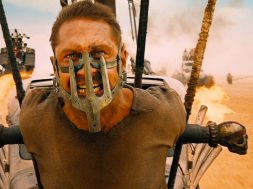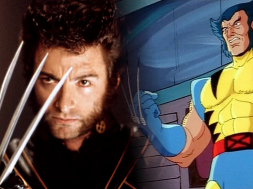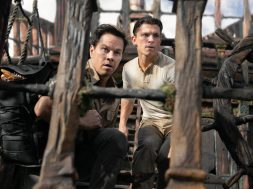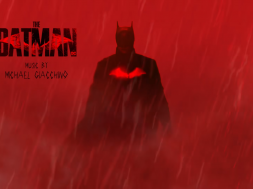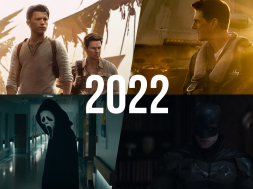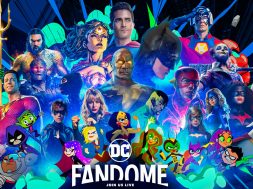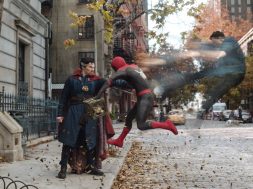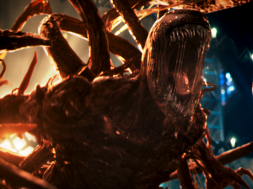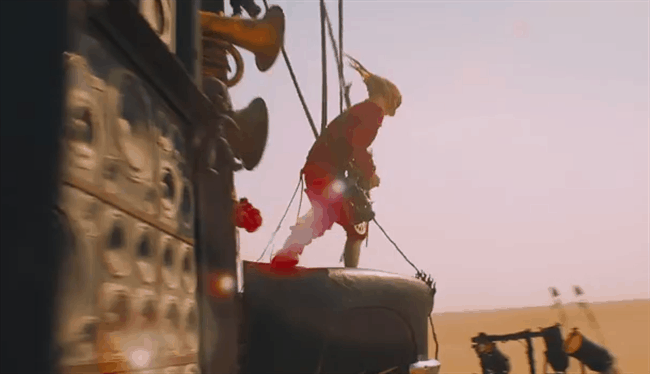
The idea for a fourth Mad Max film has been wandering around George Miller‘s mind since as far back as 1998, and you can tell. The resurrection of an old franchise, especially one as ingrained in cult status as Mad Max is, can be a very hit or miss affair. Sometimes it works, sometimes it just doesn’t and we all agree it didn’t happen. Mad Max: Fury Road is a rare example of it REALLY working and not only working as a sequel, but as a full realization of the original concept. In several years and several false starts with which to sculpt the vision and scope of the film, Miller has managed to create one of the most adrenaline pumping action spectacles of the year.
Tom Hardy takes on the legendary Max this time around, as the world around him has slipped further into the grips of madness. The earth’s population is starved of oil, water and bullets and this has led to a very deeply entrenched culture of tribalism, with lauded leaders at the helm. One such leader is returning antagonist Immortan Joe, played by Hugh Keays-Byrne, who controls a large water supply in a citadel that has captured  Max. After one of Joe’s higher-ups, Imperator Furiosa, in a show-stealing turn from Charlize Theron, goes AWOL on a trading mission, Joe launches the retrieval mission that makes up the structure of the entire film.
Max. After one of Joe’s higher-ups, Imperator Furiosa, in a show-stealing turn from Charlize Theron, goes AWOL on a trading mission, Joe launches the retrieval mission that makes up the structure of the entire film.
Early on, it becomes obvious how much painstaking effort Miller went to to make this film the way he wanted. Huge shots show a city full of mechanical slavery, with a population drip-fed supplies while kept under rule by a skinhead death-cult who worship Immortan Joe emphatically. Off in the distance, other cities and structures can be seen that show a scorched earth where the maniacal reign and their followers protect them to the death. Joe’s death-cult drive around in souped-up vehicles with flame-throwers and explosive spears as weapons. Each car, truck and motorbike looks slightly different from the last, the same way every outfit and scar on every henchman is slightly different. The whole film is a very wholesome experience, but you also get a sense of time and place. The events of Fury Road are in just one corner in one part of this desert wasteland.
The emphasis on a lack of CGI is an achievement. The combat truly doesn’t let up for the run-time and the choreographed set-pieces only get bigger as the film progresses. Much of the encounters are hand-to-hand, to compliment the slightly rustic feel of a world where advanced technology is in severe retrograde. As a result as you feel every punch, every explosion and every death, granting a steady catharsis to the rhythmic despair of Miller‘s apocalypse. But there’s also great story-telling in what we don’t see – the implication of sexual violence is left as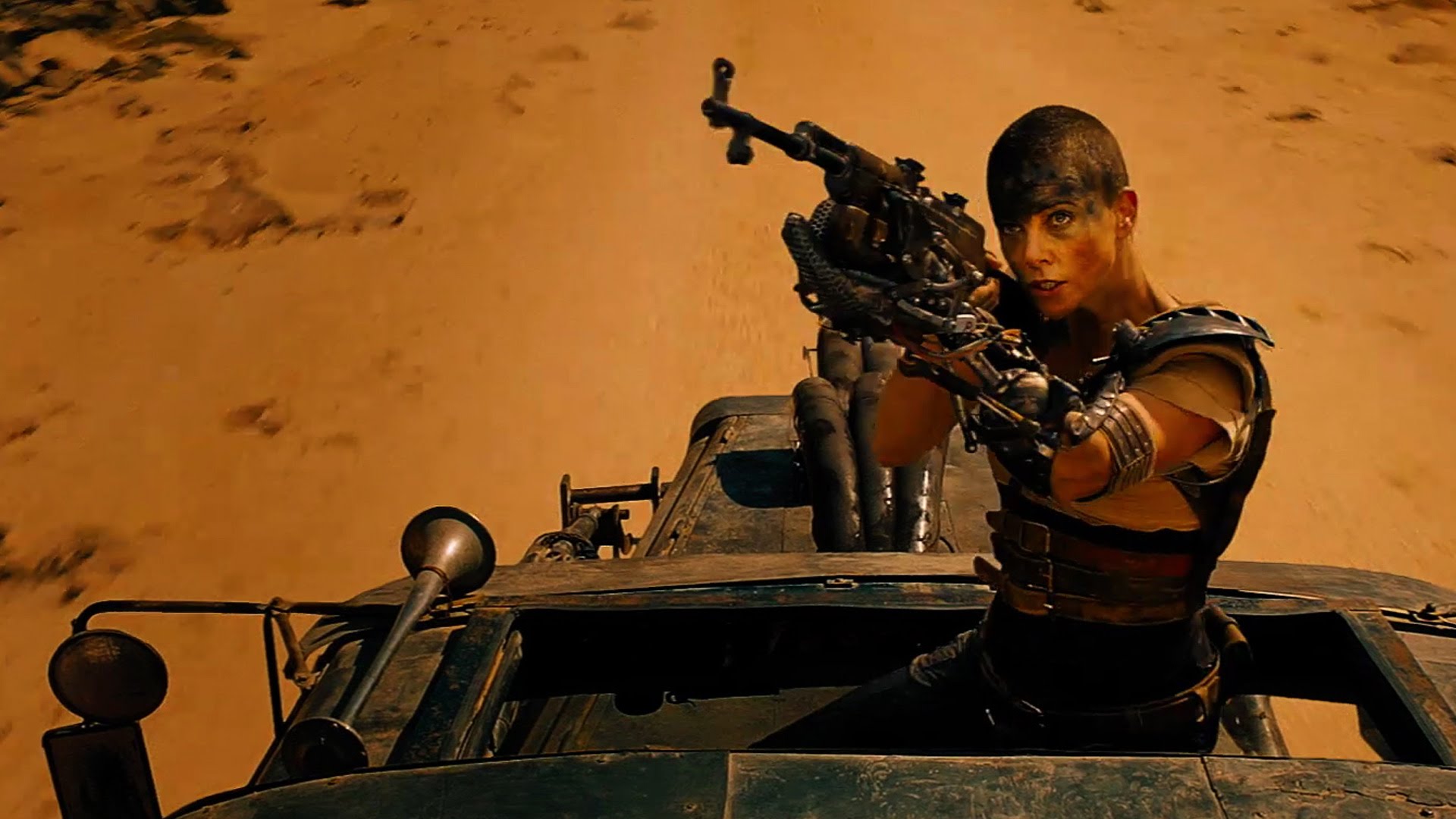 just an implication when it’s revealed that Furiosa is attempting to free Joe’s ‘wives’. As loud a film as this is, Miller knows when to shut up and allow the audience’s imagination to answer a question.
just an implication when it’s revealed that Furiosa is attempting to free Joe’s ‘wives’. As loud a film as this is, Miller knows when to shut up and allow the audience’s imagination to answer a question.
Fury Road isn’t really about Max as much as it’s about Furiosa and her brigade to free the young women of the citadel from Immortan Joe’s rule, but the film does still make careful note of who the two characters are. Furiosa is a leader who clings onto hope and who refuses to bow down, whereas Max is a warrior who finds himself in the midst of this struggle for freedom and, despite his own acceptance of the apocalyptic wastle, can’t bear to walk away from trying to fight a good fight wherever possible. Everything about the society these two live in is an unending well of despair, but yet here these two are refusing that despair for as long as possible. The big difference is in how they make that refusal; Furiosa replaces her dedication to Joe with a dedication to removing herself and the other women from his tyranny while Max is undedicated to anything except survival. Max remains unaltered throughout the film but for Furiosa, hers is the actual character journey, hers is the redemption, hers is the earned reprieve that comes in the final moments.
It fits with Max but more importantly it allows Fury Road to become its own film. Furiosa’s tale of rebellion against the patriarchy that ‘killed the world’ isn’t just another story where a hero strides in and saves the day. Max is just one man who survived the apocalypse, Furiosa is just one woman who has had enough of the cage she was in, just like everyone else and Miller‘s screenplay has a reverence for that fact. The question the film comes back to time and time again is ‘Who killed the world?’, with the obvious answer being the guys still in charge. When the party is joined by Nux (Nicholas Hoult, X-Men: Days of Future Past), a former member of Joe’s cult, the question shifts. It ceases being ‘Who killed the world?’ and becomes ‘What killed the world?’ with the answer shifting from the guys in charge to general patriarchal leadership. That’s where Miller lays to rest the bones of Fury Road‘s undertones – he isn’t interested in directly answering that question, but more so posing it via the form of an interpretive action film.
Georgle Miller has, at 70, made a film that has outdone its direct peers and made most other action and blockbuster film-makers look quite inferior. For a two-hour chase scene, the film is just as long as it needs to be with stand-out performances all around and enough ideas to keep your head-spinning well after first viewing. I don’t know how he did it, but he did and we’re all the better for it. See it as loud and as large as possible.
A juggernaut of an action film. 10/10
